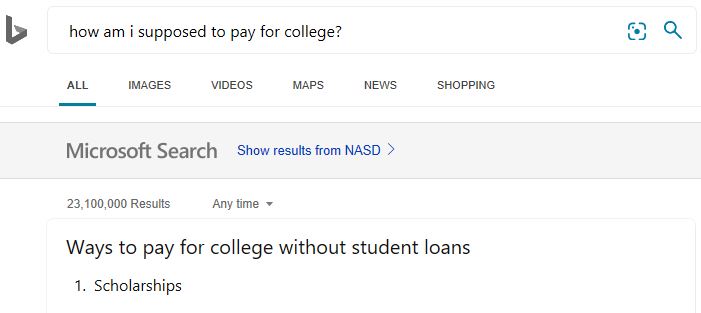Financially Adrift
A staff of qualified adults make sure we get accepted to college, but often we’re not told how to pay for it.
March 5, 2020
First semester seniors live and breathe college applications. Since freshman year, students have been groomed to apply to college. Take the SAT and the ACT and then you take them again, so your college application has the best score possible. Take honors and AP classes because they will look good on your college application. Do extracurricular activities and volunteer because it will make your college application stand out. After all that, students are prepared for every step of the college application, especially because some English teachers even provide students the opportunity to write a college application essay in class!
When seniors complete their college applications, they feel accomplished because they finished the one thing they have been preparing for since freshman year, but then what?
Teachers and administrators focus so much on the actual college application process that they neglect to discuss the steps that follow. Did schools forget about FAFSA? What about the scholarship application process?
Statistics show that 82.3% of students who plan on attending college receive some form of financial aid. Considering how many students rely on financial assistance to afford college, it is disturbing how little schools prepare their students for the application process of financial aid and scholarships. It doesn’t really matter how many colleges a student gets accepted to if they can’t afford them, which is exactly why teachers, counselors and other advice-giving adults should talk about scholarship applications as comprehensively as they do college applications.
I understand that giving too much information to already overwhelmed students may not be beneficial because their number one priority is getting accepted to college. Students who are focused on writing college essays and going through the application process will not want to take on another task of scholarship applications.
Because of this, I suggest having discussions about applying for scholarships and financial aid later in the school year, after most students have been accepted to a college. I have never had a teacher who covered the details of applying for FAFSA, which is why I had to rely on my parents so heavily to get through this process. Because I have an older sister who went through the FAFSA process with my parents, they were able to guide me through it. But this isn’t the case for parents of an oldest child or an only child. Without having any prior knowledge or experience in applying for financial aid, it can be quite hard to navigate.
Having open, in-class discussions about applying for FAFSA and for scholarships would be beneficial not only to NASH students who plan on attending college but also to the parents of these students who don’t have prior knowledge of the processes of applying for financial aid. And although some scholarships take little or no effort to apply for, there are many scholarships that are more complex.
Not to worry, however. I have linked some websites that have easy, and dare I say fun, scholarships to ease your way into the scholarship process if you’ve yet to start.
https://www.fastweb.com/college-scholarships/articles/unique-silly-fun-scholarships













